An early list includes: Light Yellow, Medium Chromium Yellow, Mustard Yellow & Dark Golden Yellow
Shades of Yellows – pre-1915
It has long been recorded that one of Artus Van Briggle’s favorite glazes was Mustard, a matte bright yellow, thought to perhaps have been developed from appreciation of the Goldenrod flowers growing in the gardens adjacent to the first pottery at 617 N. Nevada Ave. A copy of a letter from Artus Van Briggle (during his convalescence with tuberculosis) back to the pottery, discussed changing the formula of the glaze to make the blend a little bit less expensive.
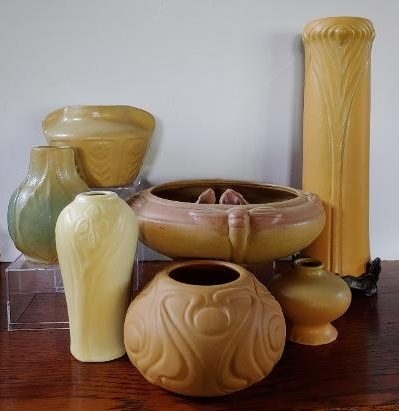
Early pieces were produced in a variety of yellow shades. Pictured above are left to right, BACK ROW: #848, 1914 yellow w/green over spray; #522, 1913 yellow; #903D dragonfly bowl with flower frog, both with red over spray; #62, 1903 with bronze base; FRONT ROW: #833, teens era, very light yellow; #146, 1904 mustard yellow; #349E, 1905 dark yellow.
Yellow Gloss Glaze – introduced 1984
Yellow gloss glaze was produced by Jeff Stevenson. He worked at VBPCo during the summers and on Saturdays from 1969 until 1977, then full time, after graduating from Univ. of Missouri-Rolla (now Missouri University of Science and Technology) with a degree in Ceramic Engineering. After graduation, until late 1988, Jeff was responsible for glaze development (and troubleshooting), and also shared general management with his father, Ken Stevenson. Jeff furnished this note: “My notes are limited on this one, but I think it was developed in late 1984. To the best of my knowledge, it was still in production when I left the pottery in late 1988.” For this piece Jeff says it appears the glazer added a little of both jade green and brown around the top.
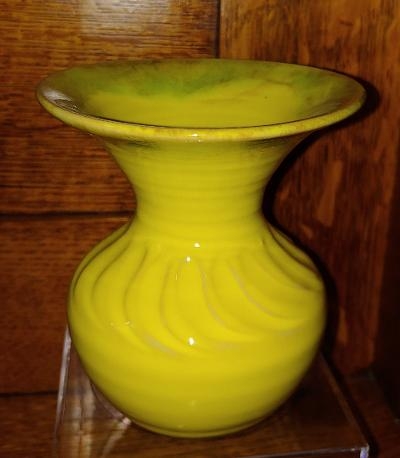
“Cs” Original by Craig Stevenson
Matte Yellow Glaze, Goldenrod – introduced 1988
Jeff Stevenson, son of the pottery owner; was the person who created this glaze. He worked at VBPCo during the summers and on Saturdays from 1969 until 1977, then full time, after graduating from Univ. of Missouri-Rolla (now Missouri University of Science and Technology) with a degree in Ceramic Engineering. After graduation, until late 1988, Jeff was responsible for glaze development (and troubleshooting), and also shared general management with his father, Ken Stevenson. Jeff furnished this note: “In 1988, I developed a matte yellow glaze, which I think was called Goldenrod. I believe it was discontinued in 1990.”
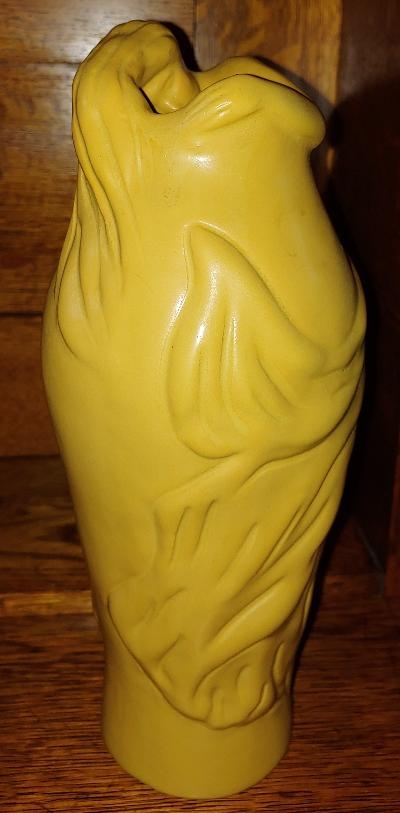
ASPEN – introduced in 2002 & Aspen Sunrise in 2003
A new glaze color, ASPEN YELLOW, was introduced in the VB Collector’s Quarterly, Spring 2002. The first two photos are of a piece dated 2002. The third photo is one, when purchased was presented as “Aspen Sunrise,” and is a reticulated version with the addition of blue and pink over sprays. It is dated 2003. A Van Briggle website page, dated 2003, stated Aspen Sunrise was new that year.
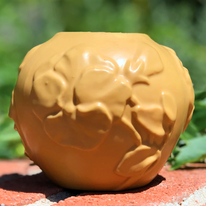
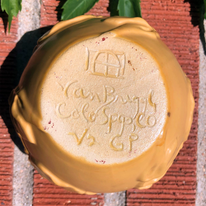
Kenneth Talmadge Stacks
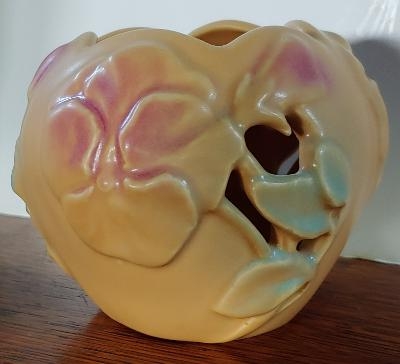
dated V3 (2003) sold as “Aspen Sunrise” with
highlights of red & blue.
ORANGE
A Van Briggle advertisement in “Vogue Magazine”, November 15, 1916; listed available colors as “Rose-Pink, Turquoise Blue, Green, Orange and Copenhagen Blue.” Two examples of this bright orange glaze have surfaced, both on Design #688, and both with Roman Numeral bottom markings which were used with glaze experimental pieces
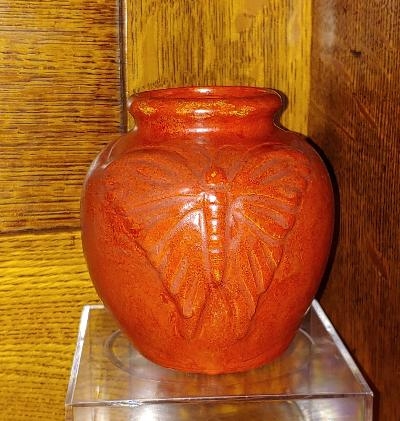
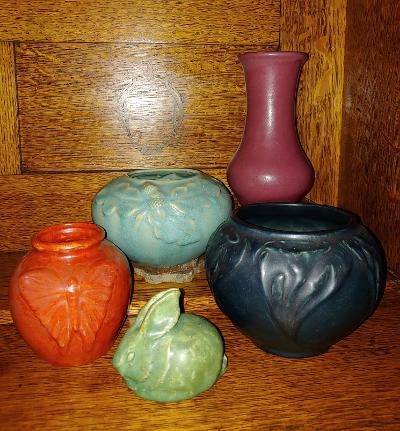
Not all dated 1916; but perhaps close enough to represent the colors stated in the 1916 advertisement. Rose-Pink? dated 1914; Turquoise Blue?, dated 1914; Green, dated 1916; Copenhagen Blue, dated 1916.
Green Bunny: J. Emma Kinkead, designer of the rabbit, recorded that the first was made in 1916.
Copenhagen Blue: One of the original 1898 Lorelei vases made by Artus while at home in Cincinnati is also this color. Our collection includes a #157, 1903 Yucca vase this color; three pieces (#845, 880, #951) all dated 1916, and one of the 1898 reproduction Lorelei vases produced in 2000.